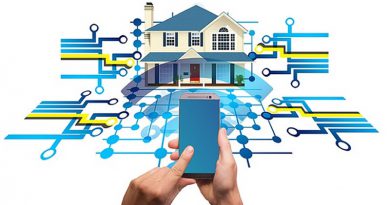Setting Up Smart Home Systems: Installation and Costs
Smart home systems have become increasingly popular, offering homeowners a convenient and interconnected living experience. From automated lighting and security to energy management and entertainment, these systems bring advanced technology into our homes. In this article, we will explore how smart home systems are installed and discuss the associated costs. Understanding the installation process and financial considerations can help homeowners make informed decisions when embarking on their smart home journey.
Installation Process
The installation process for smart home systems typically involves several steps to ensure a seamless integration of devices and functionalities. While the specifics may vary depending on the complexity and scope of the system, here is a general overview of the installation process:
- Planning and Assessment: Begin by assessing your needs and identifying the features and devices you want to incorporate into your smart home system. This step allows you to determine the required equipment, such as smart thermostats, security cameras, or lighting controls.
- Network Setup: A robust network infrastructure is essential for a reliable smart home system. Ensure that your home has a stable Wi-Fi network with adequate coverage throughout the premises. If necessary, consider installing additional access points or using wired connections for devices that require a more stable connection.
- Device Installation: Install the smart devices according to the manufacturer’s instructions. This may involve mounting security cameras, connecting smart thermostats to the HVAC system, or replacing traditional light switches with smart switches or bulbs. Pay attention to compatibility requirements and follow the recommended installation procedures for each device.
- Hub or Controller Setup: Many smart home systems utilize a central hub or controller to manage and coordinate the connected devices. Set up the hub and configure it to connect with the devices in your system. This step often involves downloading a mobile app or using a web interface to link the devices to the hub.
- Configuration and Personalization: Once the devices are connected, configure their settings according to your preferences. This may include creating automation routines, setting up voice control with virtual assistants, or customizing device parameters through the hub’s interface.
- Testing and Troubleshooting: Thoroughly test each device and functionality to ensure proper operation. Address any connectivity issues, software updates, or compatibility conflicts that may arise during the installation process.
Cost Considerations
The cost of setting up a smart home system can vary significantly based on various factors, including the size of the property, the complexity of the system, and the chosen devices and brands. Here are some cost considerations to keep in mind:
- Device Costs: The cost of individual smart devices, such as smart thermostats, cameras, or lighting controls, can vary depending on the brand, features, and quality. Research different options and compare prices to find devices that align with your budget and requirements.
- Hub or Controller: Some smart home systems require a central hub or controller, which may incur an additional cost. These hubs can range in price depending on the brand and functionality they offer. Consider the compatibility with your chosen devices and the ease of use when selecting a hub.
- Installation Services: If you prefer professional installation, there may be additional costs associated with hiring technicians or smart home installation services. These professionals can ensure a smooth installation process and assist with any technical challenges.
- Infrastructure Upgrades: In some cases, upgrading the home’s network infrastructure may be necessary to support a reliable and high-performing smart home system. This could involve investing in a more robust router, additional access points, or even wiring solutions. Factor in the costs of these infrastructure upgrades, if needed.
- Long-Term Savings: While there are upfront costs involved in setting up a smart home system, it’s important to consider the potential long-term savings. Smart devices, such as energy-efficient thermostats or lighting controls, can lead to reduced utility bills over time, offsetting the initial investment.
Conclusion
In conclusion, setting up a smart home system involves careful planning, installation, and configuration of devices to create an interconnected living environment. Understanding the installation process and considering the associated costs allows homeowners to make informed decisions and tailor their smart home systems to their needs and budget. As technology continues to advance, smart home systems are becoming more accessible and affordable, offering homeowners the opportunity to embrace the convenience, comfort, and efficiency that these technologies bring to modern living spaces.




